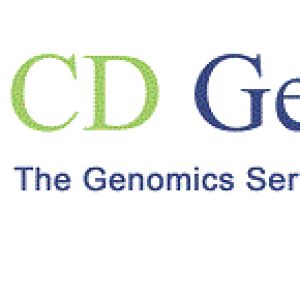RNA Sequencing Increases the Chance of RNA Biomarker DiscoveryPosted by kiko on March 22nd, 2022 Biomarkers are defined as measurable biological characteristics that are associated with normal or pathological conditions. They possess clinical relevance, including diagnostic, prognostic, and predictive values. RNA, not only an essential part of the central dogma, is certainly a relatively untapped resource for biomarker discovery of various diseases.
Cumulating data shows that RNA molecules, including mRNAs, lncRNAs, miRNAs, siRNAs, piRNAs, snoRNAs, and snRNAs, are more sensitive and specific than protein biomarkers since they are easy to detect and quantify at very low abundance. Moreover, RNA has the advantage of providing dynamic insights into cellular states and regulatory processes by comparing DNA biomarkers. Those findings turned scientists’ attention to RNA-based biomarkers.
RNA Sequencing Approach to Identify Biomarkers Although mixed results have been obtained, microarray analysis and RT-qPCR, which are widely used for detecting known RNAs, have provided a wealth of information about transcriptional profiles in pathological states.
Within the past decades, next-generation sequencing (NGS) technology has evolved as a valuable tool for identifying coding and non-coding RNAs at the whole genome level. This change has been driven by the realization that researchers need to increase the depth and variety of RNA/DNA sequencing to capture a more comprehensive view. RNA-Seq is capable of annotating structural variants, allele-specific expression, and disease-associated SNPs by analyzing alternative splicing events. Coupled with bioinformatics pipelines, many extracellular RNAs (exRNAs) continue to be found as potential biomarkers. Circular RNAs (CircRNAs), for instance, were found to be stably existing in exosomes and differentially expressed between cancer and normal serum recently, making them a potential source of biomarkers as well.
Long Read Sequencing Technology-The Opportunity of RNA-Seq RNA analysis based on short-read sequencing requires the conversion of RNA templates into cDNA strands, in which reverse transcription or amplification could introduce bias, and not all transcripts are amplified with the same efficiency, leading to disruption of some types of RNA and transitional amplification of others. Besides, all information about base modifications is lost during RCR amplification. Long read RNA sequencing enables accurate quantification and identification of RNA or cDNA through complete full-length sequencing. It is assembled without fragmentation or amplification, simplifying the assembly and eliminating potential sources of preference. Direct RNA sequencing allows the identification of single-base RNA modifications and nucleotide sequences simultaneously, with the longest transcripts currently capable of being processed by a nanopore sequencing platform exceeding 20 kb.
The RNA Biomarkers Database for Cancer With the accumulation of nucleic acid biomarker studies, several disease-centered databases have been created and popularized. Several databases, such as HMDD, CoReCG, BC-BET, and MIRUMIR, are now publicly available for researchers to do integrated analyses and show results without command-line operations or extensive computational understanding.
In Conclusion To conclude, RNA sequencing (RNA-Seq) is an increasingly popular technology for biomarker discovery in cancer research. High-throughput and long-read RNA-Seq generate massive amounts of data that can reflect multiple biological processes but require complex computational bioinformatics pipelines to interpret.Novel software approaches can bring a standardized, rapid approach to the analysis of this data for the purposes of biomarker discovery and application. Like it? Share it!More by this author |


